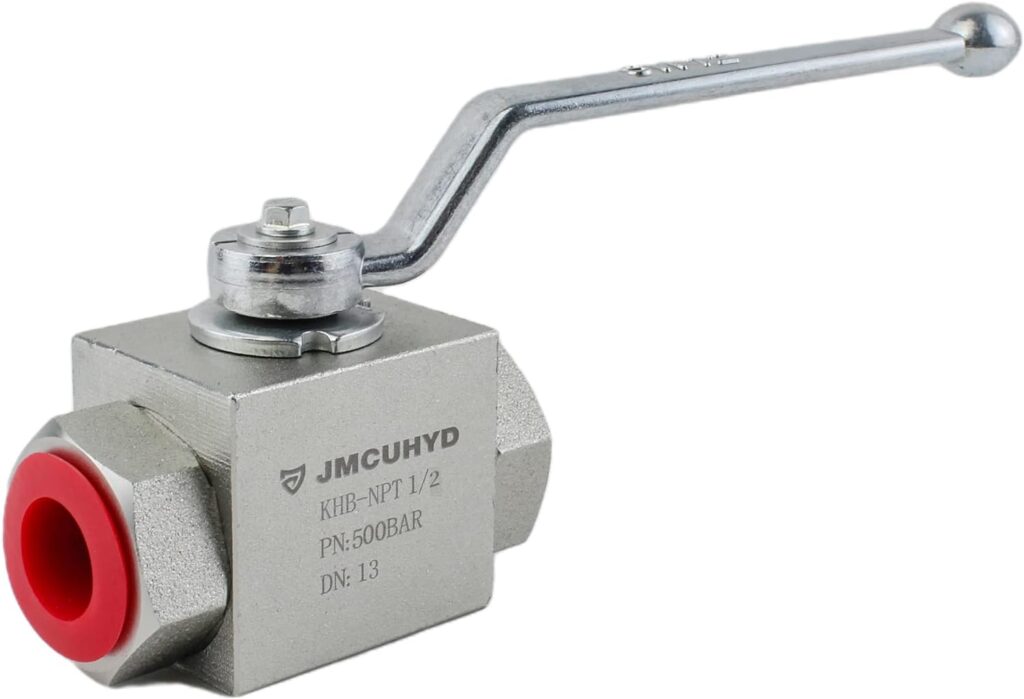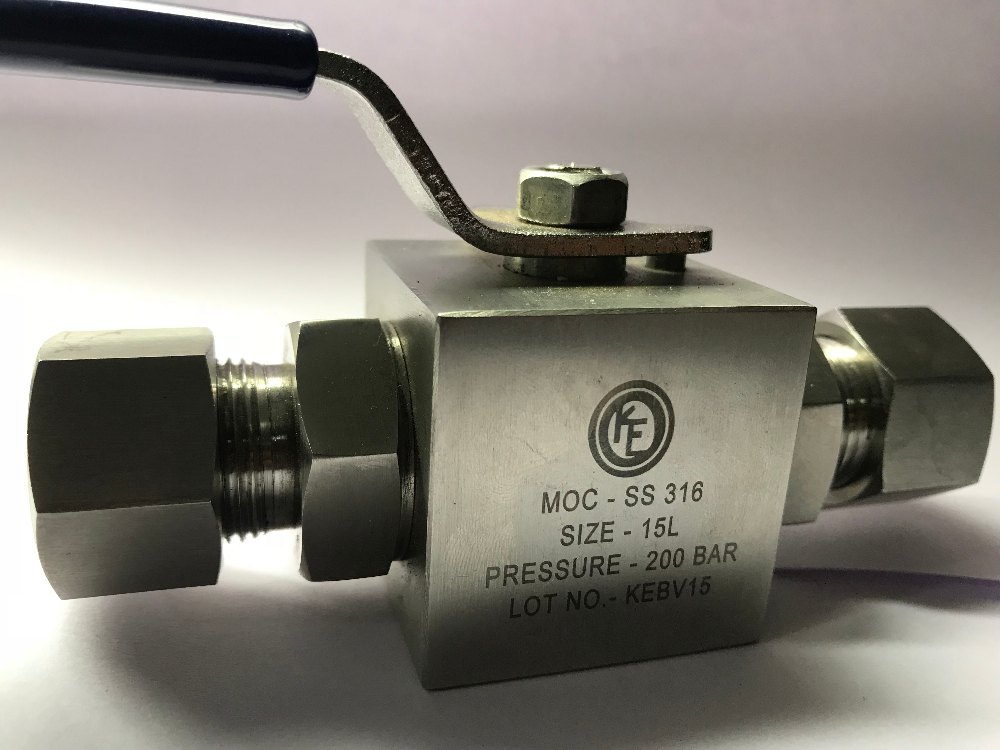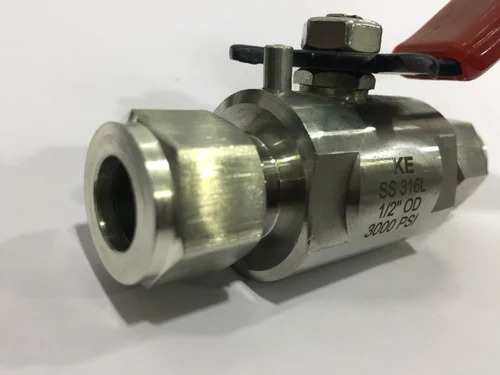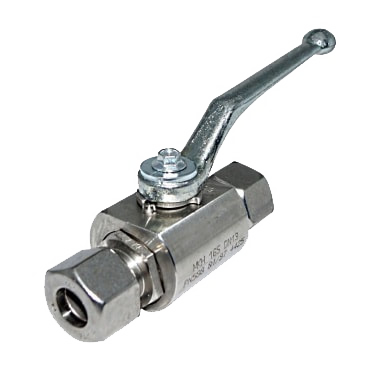Contact : +91-79045 61980 | Email: hydrofitengineers@gmail.com
SS Ball Valves for high pressure designed specifically for instrumentation applications offer precise fluid control and reliable performance in demanding environments. The Stainless steel construction ensures excellent corrosion resistance, durability, and compatibility with various fluids and operating conditions commonly encountered in instrumentation systems
Key Features of SS Ball Valves for High Pressure
Designed to withstand high pressures
These ball valves SS High-pressure for instrumentation are engineered to withstand elevated pressures typically found in instrumentation applications, which can range from several hundred to several thousand psi (pounds per square inch), depending on the specific requirements of the system.
Compact Design

These ball valves often feature a compact design, making them suitable for installations where space is limited, such as in control panels or confined instrumentation enclosures
Precise Control
Ball valves SS High Pressure for instrumentation offer precise fluid control with minimal leakage, providing accurate regulation of flow rates and pressures in critical processes
Leak Tight Performance
The sealing mechanisms of these ball valves are designed to provide reliable leak-tight performance, ensuring minimal fluid loss and maintaining system integrity even under high-pressure conditions
Various End Connections
These ball valves for instrumentation come with various end connection options, such as threaded, compression, or tube fittings, to facilitate easy installation and integration into instrumentation systems
Higher Temperatures
By using specialized Sealing materials like Viton and Silicon these ball valves can be designed and constructed to withstand higher than normal temperatures that may occur in the line or in the atmospheric surrounding and can operate with comprising on performance or integrity
Complaince to Standards
These SS high-pressure ball valves comply with relevant industry standards and specifications, such as ASTM (American Society for Testing and Materials), ASME (American Society of Mechanical Engineers), ANSI (American National Standards Institute), and ISO (International Organization for Standardization), to ensure quality, performance, and safety



SS Ball valve for High Pressure - Tube Ends OD
A SS ball valve high pressure with double ferrules and tube ends is a type of valve designed for high-pressure applications in the oil and gas industry. In this article, we will discuss the various features and benefits of this type of valve in detail.
The valve body and ball are typically made of stainless steel to withstand high pressures and corrosive environments. Stainless steel is a preferred material for high-pressure valves as it has excellent corrosion resistance, high strength, and can withstand extreme temperatures. The use of stainless steel ensures that the valve is durable and long-lasting, even when exposed to harsh environments.
The SS ball valve has a double ferrule design, which provides a secure, leak-proof connection to the tubing. The double ferrule design consists of two ferrules that compress onto the tubing when the nut is tightened, creating a seal between the valve and the tubing. The double ferrule design provides a reliable and leak-proof connection, even in high-pressure applications.
The tube ends of the ball valve allow for easy installation and removal of the valve from the tubing. The tube ends are designed to fit onto the tubing securely, providing a tight seal. This design ensures that the valve can be easily installed and removed from the system without causing any damage to the tubing or the valve.
The ball valve is designed with a quarter-turn operation that allows for quick and easy on/off control of the fluid flow. The ball inside the valve has a hole through which the fluid can pass when the valve is open. When the valve is closed, the ball rotates 90 degrees, blocking the flow of fluid. This design allows for precise control of the fluid flow, and the valve can be quickly opened or closed in case of an emergency.
The ball valve can handle pressures of up to 10,000 PSI and is often used in high-pressure systems such as hydraulic and pneumatic systems. The high-pressure rating of the valve ensures that it can handle even the most extreme conditions and environments. The valve is designed to withstand high pressures without leaking or failing, providing reliable performance in critical applications.
The double ferrule design in the ball valve ensures a reliable seal between the valve and the tubing, preventing leaks and reducing the risk of system failure. The two ferrules that compress onto the tubing provide a tight seal, ensuring that there are no leaks in the system. The reliable seal also reduces the risk of system failure, ensuring that the system operates efficiently and safely.
This type of ball valve is widely used in the oil and gas industry, chemical processing plants, and other applications where high-pressure fluids need to be controlled with precision. In the oil and gas industry, the valve is used in pipelines and other critical applications where precise control of fluid flow is essential. In chemical processing plants, the valve is used to control the flow of chemicals and other fluids, ensuring that the process is efficient and safe.
In conclusion, a SS high pressure ball valve with double ferrules and tube ends is an essential component of high-pressure systems in the oil and gas industry, chemical processing plants, and other applications. The valve is designed to withstand high pressures and corrosive environments, providing reliable and efficient performance in critical applications. The double ferrule design and tube ends provide a secure, leak-proof connection to the tubing, ensuring that the system operates safely and efficiently. The valve’s quarter-turn operation allows for precise, smooth and hassle free operation of the line.
